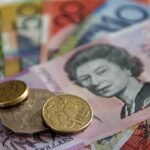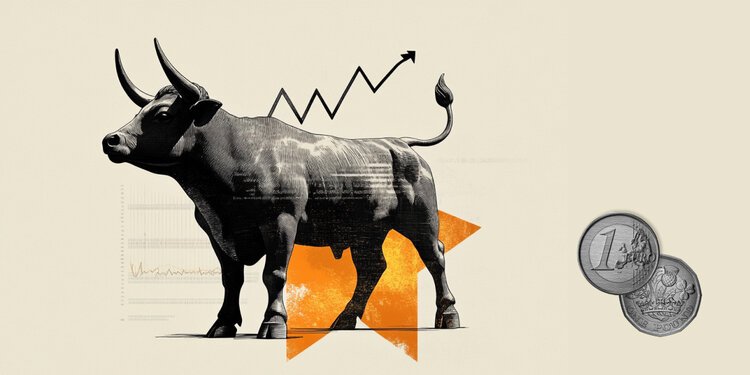- The Bank of England is expected to trim the benchmark rate by 25 basis points.
- Softer UK inflation figures are overshadowed by concerns about slowing growth.
- GBP/USD could resume its bearish trend if policymakers deliver dovish clues.
The Bank of England (BoE) will announce its decision on monetary policy on Thursday after completing the first meeting of 2025. Market participants anticipate policymakers will trim the benchmark rate by 25 basis points (bps) to 4.5% after cutting it by 50 bps throughout 2024.
But it is not just about interest rates. It’s a BoE Super Thursday, so the central bank will also release the meeting Minutes alongside the Quarterly Inflation Report. Finally, Governor Andrew Bailey will hold a press conference in which he will explain the reasoning behind the policymakers’ decision.
With a 25 bps interest rate priced in, the focus will then be on the BoE’s guidance and economic projections.
UK: Softer inflation and weaker growth
The BoE surprised market players in December with a hawkish hold, as six out of nine members of the Monetary Policy Committee (MPC) voted to keep rates on hold, while the other three opted for a rate cut.
Meanwhile, the Office for National Statistics (ONS) reported that the United Kingdom (UK) annual headline inflation edged lower to 2.5% in December from 2.6% in November. Additionally, the annual core inflation rate decreased to 3.2% in December from 3.5% prior, marking the lowest reading since September. More importantly, services inflation hit 4.4% year-on-year (YoY), below the BoE’s projection.
Growth, on the other hand, has been tepid, to say the least. The UK Gross Domestic Product (GDP) registered no growth in the third quarter of 2024, revised down from the first estimate increase of 0.1%, according to the latest ONS report. Q2 was downwardly revised to 0.5% following an initial estimate of 0.6%. The BoE expects zero GDP growth in the last quarter of 2024, downgrading the 0.3% estimate predicted in November.
With the 25 bps interest rate cut fully priced in, the focus will be on the MPC report and Governor Bailey’s speech. UK policymakers will offer an updated assessment of the economy’s potential growth rate, with the latest estimate standing at 1.3%. A downward revision seems likely, which should boost the odds for additional rate cuts in the upcoming meetings, albeit a faster pace of trims seems out of the picture at the moment.
Additionally, it is worth remembering the recent surge in UK government bonds, so-called Gilts, yields. UK Gilts yields have risen to multi-year highs at the beginning of the year, spurring concerns about government spending and tax decisions. Many analysts link the advance to that of United States (US) Treasury yields following President Donald Trump’s arrival at the White House.
Nevertheless, yields retreated in the last couple of weeks amid mounting concerns that the economic slowdown would deepen under Trump’s tariff plans. These concerns also fueled speculation the BoE will have no choice but to trim interest rates.
How will the BoE interest rate decision impact GBP/USD?
As previously mentioned, a BoE 25 bps interest rate cut is fully priced in. With that in mind, the British Pound (GBP) will likely show no reaction to the headline but react to policymakers’ fresh economic projections and how MPC votes. Ahead of the announcement, financial markets anticipate eight of the nine members will opt for a rate trim. Investors will also pay close attention to Governor Andrew Bailey’s words.
Generally speaking, the more dovish the outcome, the more the GBP could fall. The opposite scenario is also valid, with hawkish surprises from UK policymakers boosting demand for the British Pound.
Ahead of the announcement, the GBP/USD pair trades above the 1.2500 mark, recovering from a weekly low of 1.2248. The US Dollar (USD) soared at the beginning of the week as US President Donald Trump announced tariffs on imports from Mexico, Canada and China over the weekend. The subsequent USD decline came after Trump postponed the implementation of such levies, at least on Mexican and Canadian imports.
Valeria Bednarik, Chief Analyst at FXStreet, says: “Central Bank’s decisions and macroeconomic data in general is being overshadowed by US President Trump’s decision to unleash a trade war. The UK is not out of Trump’s radar, but it is definitely not among his top rivals. Still, the risk of the UK economic slowdown accelerating amid fresh US tariffs pends on policymakers ahead of the announcement. As for GBP/USD, the pair may resume its slump with a dovish tilt, albeit the reaction could be limited as investors anticipate it. If policymakers sound hawkish, the GBP/USD will likely gain extra upward traction.”
Bednarik adds: “The GBP/USD pair has an immediate resistance level at the 1.2600 threshold, with gains beyond the area exposing 1.266, the December 19 daily high. Beyond the latter, the rally could continue towards the 1.2700-1.2720 area en route to the 1.2800 figure. The 1.2470 price zone provides support ahead of the 1.2400 figure. A break below the latter could see the pair resuming its bearish trend and retesting the aforementioned weekly low at 1.2248.”
Pound Sterling FAQs
The Pound Sterling (GBP) is the oldest currency in the world (886 AD) and the official currency of the United Kingdom. It is the fourth most traded unit for foreign exchange (FX) in the world, accounting for 12% of all transactions, averaging $630 billion a day, according to 2022 data. Its key trading pairs are GBP/USD, also known as ‘Cable’, which accounts for 11% of FX, GBP/JPY, or the ‘Dragon’ as it is known by traders (3%), and EUR/GBP (2%). The Pound Sterling is issued by the Bank of England (BoE).
The single most important factor influencing the value of the Pound Sterling is monetary policy decided by the Bank of England. The BoE bases its decisions on whether it has achieved its primary goal of “price stability” – a steady inflation rate of around 2%. Its primary tool for achieving this is the adjustment of interest rates. When inflation is too high, the BoE will try to rein it in by raising interest rates, making it more expensive for people and businesses to access credit. This is generally positive for GBP, as higher interest rates make the UK a more attractive place for global investors to park their money. When inflation falls too low it is a sign economic growth is slowing. In this scenario, the BoE will consider lowering interest rates to cheapen credit so businesses will borrow more to invest in growth-generating projects.
Data releases gauge the health of the economy and can impact the value of the Pound Sterling. Indicators such as GDP, Manufacturing and Services PMIs, and employment can all influence the direction of the GBP. A strong economy is good for Sterling. Not only does it attract more foreign investment but it may encourage the BoE to put up interest rates, which will directly strengthen GBP. Otherwise, if economic data is weak, the Pound Sterling is likely to fall.
Another significant data release for the Pound Sterling is the Trade Balance. This indicator measures the difference between what a country earns from its exports and what it spends on imports over a given period. If a country produces highly sought-after exports, its currency will benefit purely from the extra demand created from foreign buyers seeking to purchase these goods. Therefore, a positive net Trade Balance strengthens a currency and vice versa for a negative balance.
Economic Indicator
BoE Minutes
The minutes of the Bank of England (BoE) Monetary Policy Committee (MPC) meetings are published alongside the committee decision. The minutes give a full account of the policy discussion, including differences of view among members. They also record the votes of each member of the MPC. Generally speaking, if the BoE is hawkish about the inflationary outlook for the economy, then the markets see a higher possibility of a rate increase, and that is positive for the GBP.
Read more.
Next release: Thu Feb 06, 2025 12:00
Frequency: Irregular
Consensus: –
Previous: –
Source: Bank of England
























